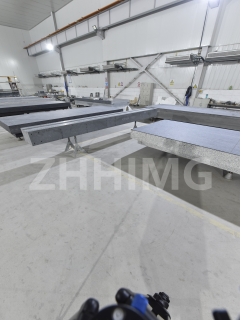The granite bed is a critical component in many semiconductor equipment machines, serving as a flat and stable surface for wafer processing. Its durable and long-lasting properties make it a popular choice for manufacturers, but it does require some maintenance to keep it in top condition.
First of all, it's important to note that granite is a natural material that is resistant to wear and tear. It has a high density and low porosity, which make it less susceptible to corrosion and deformation. This means that the granite bed can last for many years without needing to be replaced as long as it is properly maintained.
However, even with its resilient properties, the granite bed can still be damaged over time, particularly if it is exposed to harsh chemicals or extreme temperatures. For this reason, regular inspection and cleaning are important to ensure that the surface remains smooth and free from defects that could affect wafer processing.
In terms of service life, the granite bed can last for many years with proper maintenance. The exact lifespan will depend on various factors, such as the quality of the granite used, the level of wear and tear it experiences, and the amount of maintenance it receives.
In general, most semiconductor equipment manufacturers recommend replacing the granite bed every 5-10 years or when signs of wear and tear become noticeable. While this may seem like a high frequency for replacement, it's important to consider the high precision and accuracy required in wafer processing. Any defects in the granite surface could result in errors or inconsistencies in the finished product, which can have significant financial implications.
In conclusion, the granite bed is a critical component in semiconductor equipment machines that can last for many years with proper maintenance. While it may require replacement every 5-10 years, it pays to invest in the highest quality granite and regular maintenance to ensure the best performance and accuracy in wafer processing.
Post time: Apr-03-2024

